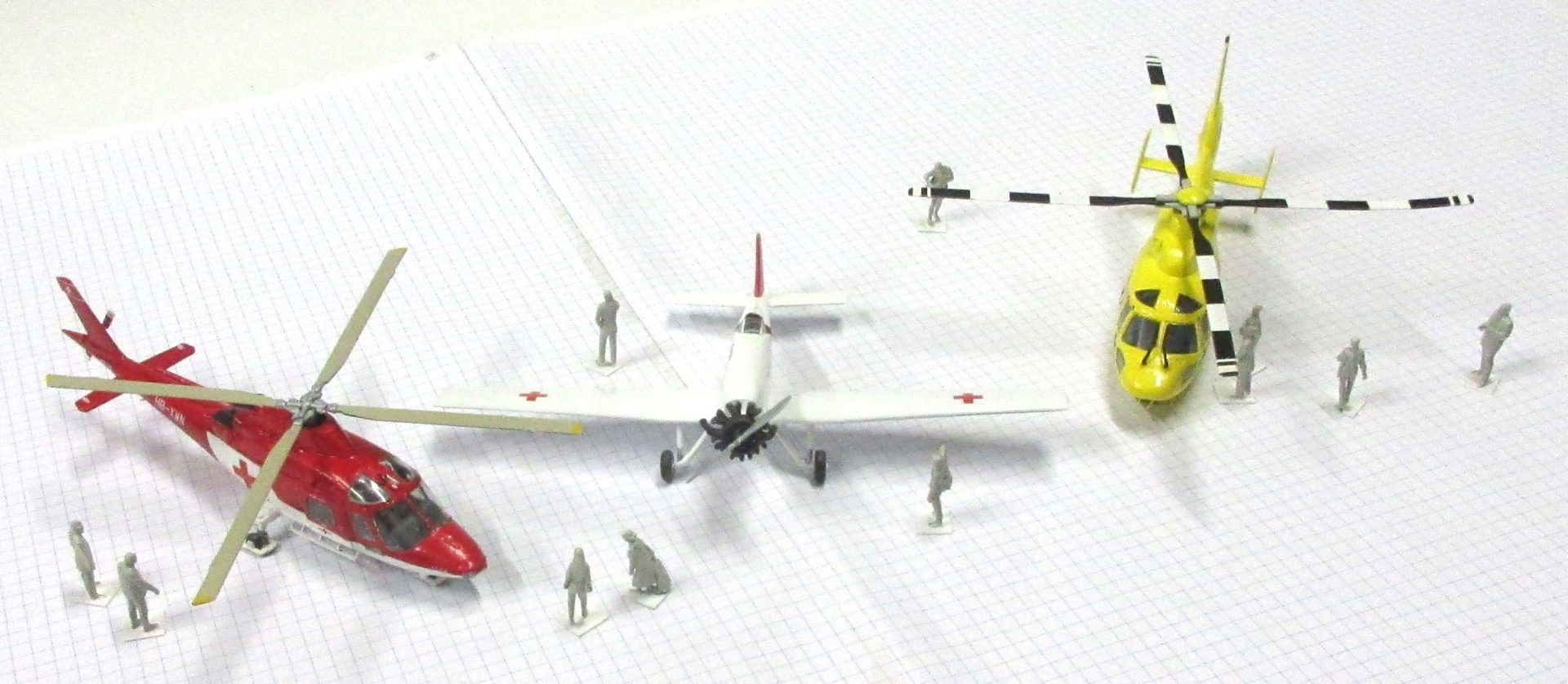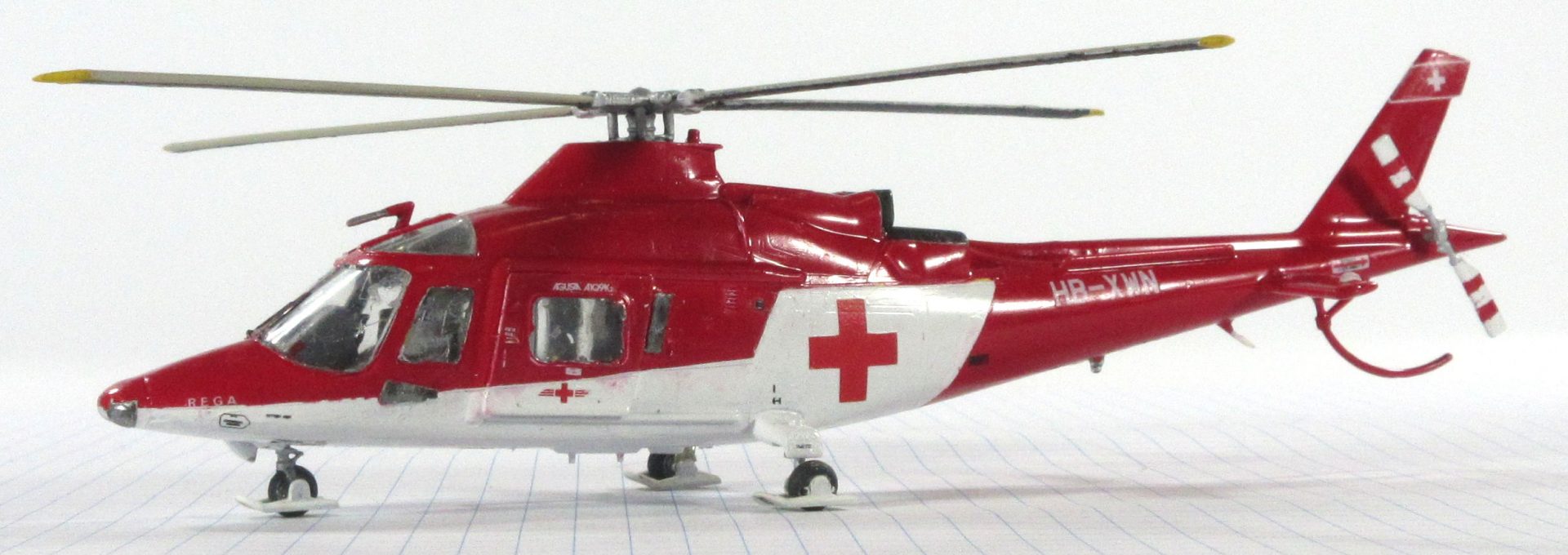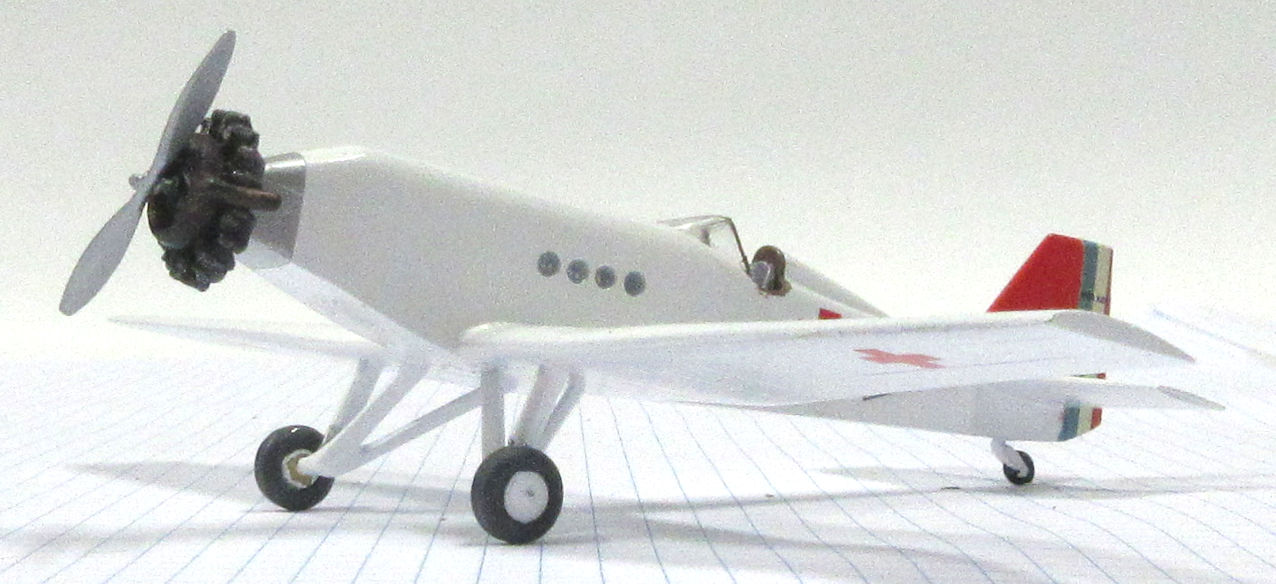Ambulance Aircraft
Augusta 109 K2 – Bloch 81 – Aerospatiale SA365N Dauphin 2
 Two of the great advantages of air travel over land travel is that it is faster and can simply fly over obstructions like rivers, mountains and traffic jams. This makes flying perhaps the best (but not the cheapest) way of transporting people suffering from critical medical issues. Since the 1920s many different aircraft have been used as aerial ambulances but very few have been designed solely for that purpose. The added versatility of helicopters since the 1950s have made them very popular as aerial ambulances and many civil helicopters are employed in that role. Let’s look today at three ambulance aircraft and note, in passing, that the 1930s one has wings and the later two have rotor blades.
Two of the great advantages of air travel over land travel is that it is faster and can simply fly over obstructions like rivers, mountains and traffic jams. This makes flying perhaps the best (but not the cheapest) way of transporting people suffering from critical medical issues. Since the 1920s many different aircraft have been used as aerial ambulances but very few have been designed solely for that purpose. The added versatility of helicopters since the 1950s have made them very popular as aerial ambulances and many civil helicopters are employed in that role. Let’s look today at three ambulance aircraft and note, in passing, that the 1930s one has wings and the later two have rotor blades.
Augusta 109 K2 – in 1/72 by Revell
This aircraft began as an Italian designed light utility helicopter to serve in civil roles including, VIP transport, aeromedical, law enforcement and search and rescue. Design work began in the late 1960s and the first prototype made its first flight in 1971. Since then it has been popular in civil and military roles. The Augusta 109K2 version was created with improved engine and transmission, and other features including widened cabin and fixed undercarriage, for operation in hot and high altitude conditions. Among other things, this has made it suitable for ambulance service in high altitude conditions such as the European Alps.
This Revell kit of the Augusta 109 was first published in 1999 and has been reboxed several times, once in a military version. It is not a difficult kit to make and has good detail which is well up to the standard of Revell kits of this period. I can recommend it to those of you who like your helicopters. There is a good in-box review of this kit at Aeroscale website.
Bloch 81 in 1/72 by Dujin
Almost since the beginning of aviation aircraft have been used to transport injured or sick patients on stretchers. Very few have been designed for the role, one of them being this aircraft which was ordered by the French government at the beginning of the 1930s to perform medical evacuations for France’s military forces in that country’s North African colonies. Twenty were manufactured, they began entering service in 1935 and saw service into World War 2. At one time they were used by opposing Vichy French and Free French forces.
This is another of those rare and challenging Dujin kits that date, probably, from the 1990s. It is a full resin kit and fairly primitive by today’s standards but I won’t hear anything bad said about my Dujin kits. I see on Scalemates that there is another resin kit of this aircraft, published by VSV-Product in Russia, which was published a few years ago and looks, from the one photo I’ve been able to find, a superior kit to the Dujin one. But the www will tell me nothing more about the kit than that it exists so I can’t tell you anything more than that.
Aerospatiale SA365N Dauphin 2 in 1/72 by Matchbox
This aircraft was an improved twin engined version of the earlier but unsuccessful single engines SA360 Dauphin. Production began in 1975 and over 1,100 have been manufactured. The SA365N was a much improved version that featured more powerful engines, greater use of composite materials, a better cabin arrangement, and retractable landing gear. It was first flown in 1979 and entered service in 1982. Its cabin can accommodate up to 12 passengers in addition to the two pilots and up to seven passengers in a VIP layout. It has been used in military and civil roles including emergency medical service and search and rescue.
I made this model from the ancient Matchbox kit what was first published in 1983 and republished by Revell in 2002. It is a typical Matchbox kit of the period and quite basic and clunky by modern day standards. The decal sheet is not great but I used an excellent S+M Models decal sheet to give the model some character. If you want to see what the parts look like you can see them in the Wombat Models video on facebook and the Modeling Madness review of the Revell boxing of this kit gives a good summary of its benefits and difficulties.



